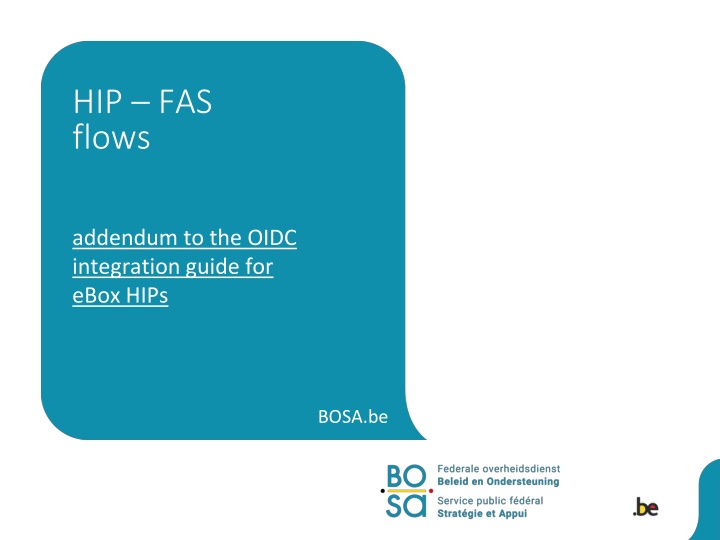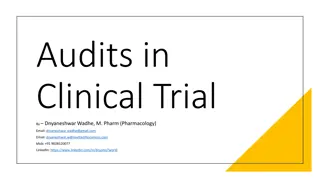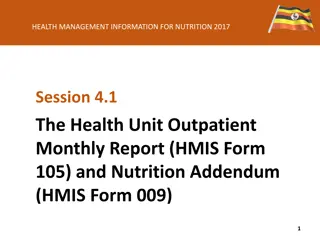
Understanding OIDC Flows for eBox HIPs
Explore the addendum to the OIDC integration guide for eBox HIPs by diving into specific OIDC flows including FAS Consent, HIP Consent, and Refresh Token Flow. Learn how these flows are implemented and their recommendations for usage. Details of OpenID Connect calls and responses from and towards FAS are also provided in the FAS OIDC Integration Guide.
Download Presentation

Please find below an Image/Link to download the presentation.
The content on the website is provided AS IS for your information and personal use only. It may not be sold, licensed, or shared on other websites without obtaining consent from the author. If you encounter any issues during the download, it is possible that the publisher has removed the file from their server.
You are allowed to download the files provided on this website for personal or commercial use, subject to the condition that they are used lawfully. All files are the property of their respective owners.
The content on the website is provided AS IS for your information and personal use only. It may not be sold, licensed, or shared on other websites without obtaining consent from the author.
E N D
Presentation Transcript
HIP FAS flows addendum to the OIDC integration guide for eBox HIPs BOSA.be
Content : Content : Documentation Documentation of of specific specific OIDC OIDC flows flows This document is an addendum to the OIDC integration guide for eBox HIPs, it describes 3 flows: Authorization Code Flow - FAS Consent This flow must be used by the HIP RP to force the consent page via the FAS user interface during login. The HIP itself does not need to implement the consent page. Authorization Code Flow - HIP Consent (=implicit consent) This flow can be used by the HIP RP to handle the consent page by itself. This flow is not recommended. (note: in all cases the consent itself is stored in FAS) Refresh Token Flow This flow can be used by the HIP RP to keep a long lasting token for every user. Implementation of this flow is only recommended when the HIP does not use FAS to authenticate each time. (for instance when the HIP manages its own authentication methods outside the FAS, but FAS is only used when a consent is requested)
Details of the OpenID Connect calls / responses from and towards the FAS can be found in the FAS OIDC Integration Guide.
Details of the OpenID Connect calls / responses from and towards the FAS can be found in the FAS OIDC Integration Guide.
Details of the OpenID Connect calls / responses from and towards the FAS can be found in the FAS OIDC Integration Guide.


















